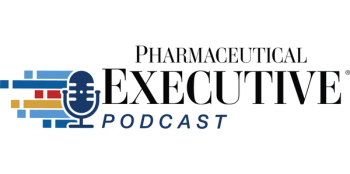
Love Potion #9: The Hypoactive Sexual Desire Disorder Pipeline
New products in development for women distressed by a lack of sexual desire and satisfying sexual experiences are causing a stir, but not for the reasons one might expect.
New products in development for women distressed by a lack of sexual desire and satisfying sexual experiences are causing a stir, but not for the reasons one might expect.
Do women have less of a right than men to combat sexual disorders with pills? That’s the question eight national and international women’s advocacy groups asked Janet Woodcock in January.
The advocacy groups pushed for a balanced FDA review of Raleigh, North Carolina-based Sprout Pharmaceuticals’ flibanserin, formerly a Boehringer Ingelheim (BI) project, aimed at hypoactive sexual desire disorder (HSDD). As defined by the American Psychiatric Association, HSDD is a “persistent or recurrent deficiency or absence of sexual fantasies and desire for sexual activity that causes marked distress or interpersonal difficulty.”
The need for advocacy in support of a balanced flibanserin review was due to a “sharp contrast and disparity around gender when it comes to the evaluation of drugs that address the issue of low sexual desire,” wrote Loribeth Weinstein, CEO and executive director at Jewish Women International. As part of the organization’s mission to help “build empowered women and strong families [in the US] and around the world,” it pressed FDA to “make progress in equalizing the playing field through available medical treatment options for a woman’s individual sexual health.”
FDA has never approved a treatment for HSDD. On February 11, Sprout
Female sexual dysfunction is one of 20 priority areas for FDA in fiscal years 2012 to 2015, according to PDUFA V, and the agency released
“We’re not pathologizing women, we’re looking at women who have a real problem and find that it causes them considerable distress,” says Robert Pyke, chief medical officer at S1 Biopharmaceuticals, and a former BI development team member on flibanserin. In fact, the Diagnostic and Statistical Manual of Mental Disorders clearly states that HSDD is not a disorder unless the woman is distressed about it, says Pyke.
New Jersey-based S1 Biopharma has its own CNS product targeting HSDD. Lorexys, a fixed-dose combination of bupropion and trazodone – two antidepressants with lapsed patent protection – is targeting
What level of efficacy might that be? The gold standard for CNS drugs, according to Pyke, is “at least a 20% margin response rate over placebo,” roughly what the SSRI class of medications achieve. At Boehringer Ingelheim, flibanserin clinical data “averaged at about 10% more responders than placebo, about 47% versus 37%,” says Pyke. “Sprout’s data were really about the same.” Nick Sitchon, CEO at S1 Biopharma, says the company anticipates an official interim analysis read-out on its phase 2a study for Lorexys this quarter, and an possible NDA filing with FDA in 2017, if all goes well.
In 2004, FDA rejected a testosterone patch for HSDD from Procter & Gamble, and BI handed off flibanserin to Sprout in 2011, but other companies are interested in the disorder. Palatin Technologies completed a phase 2b trial on bremelanotide and is currently seeking guidance from the EMA on phase 3 trial design.
In just a couple of years, the conversation about female sexual dysfunction appears to have shifted from a paternalistic fear of Big Pharma pushing unwanted medication on women by manufacturing a fake disorder, to a critique of FDA suggesting that regulators are unjustly diminishing the importance of a woman’s sexual health and satisfaction, compared with a man’s. Advocacy groups argue that drugs for female sexual dysfunction face a higher bar than male drugs like Viagra or Cialis.
The difference between erectile dysfunction (ED) drugs and products like flibanserin or S1 Biopharma’s Lorexys, says Pyke, are that ED drugs have a more, ahem, straightforward proof of response. Lorexys takes a CNS approach to sexual dysfunction, while ED drugs focus on improving the physical performance of a sex act.
“Whether a woman’s problem is with desire or orgasm, or arousal, or sexual pain, it’s reductionist thinking to say, ‘Whatever does the job to improve her sex life behaviorally,’” says Pyke. “The interview studies that have been done show that women with HSDD were very uninterested in simply, starkly, increasing their number of satisfying sexual events. What they wanted was a restoration of their desire.”
Newsletter
Lead with insight with the Pharmaceutical Executive newsletter, featuring strategic analysis, leadership trends, and market intelligence for biopharma decision-makers.




